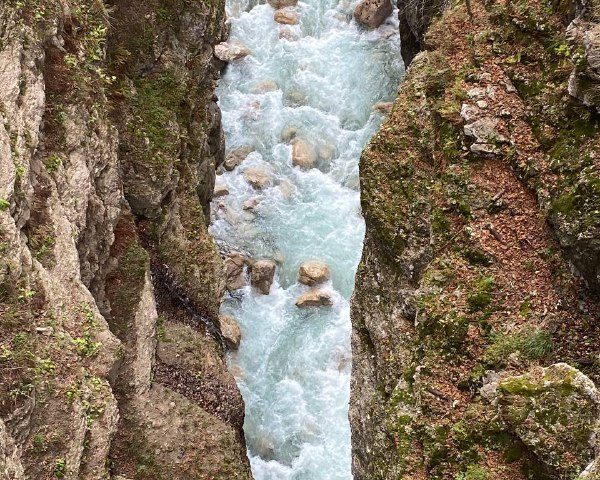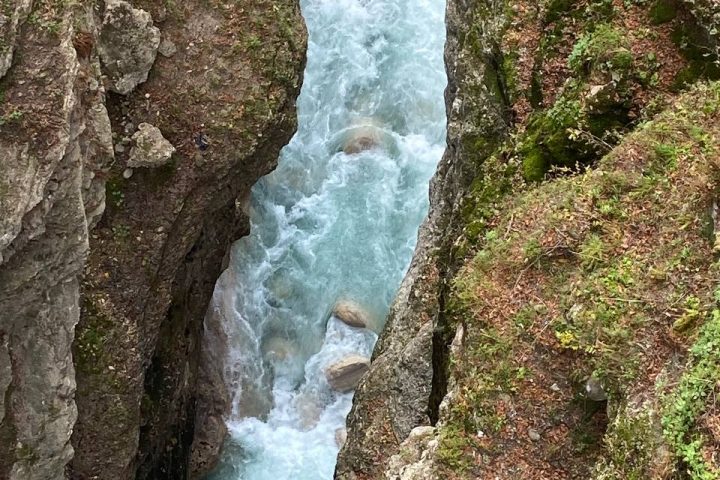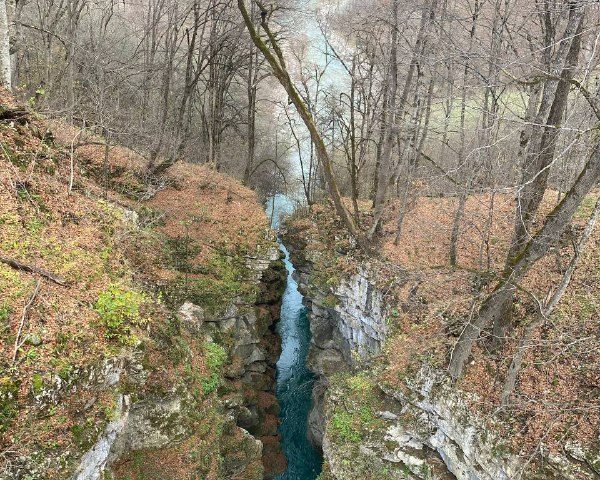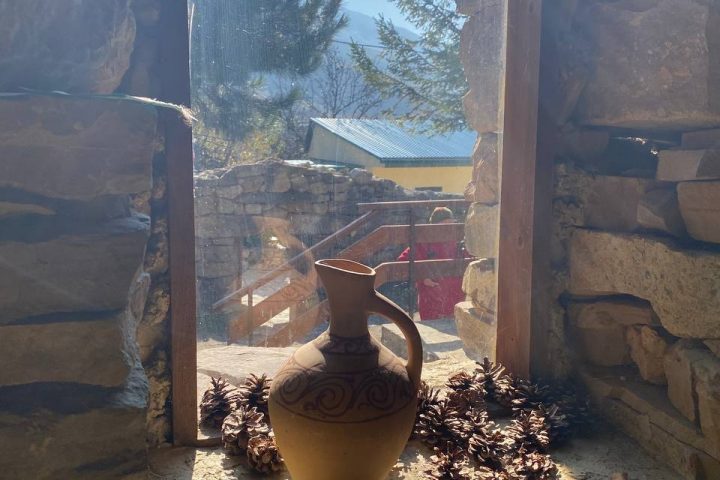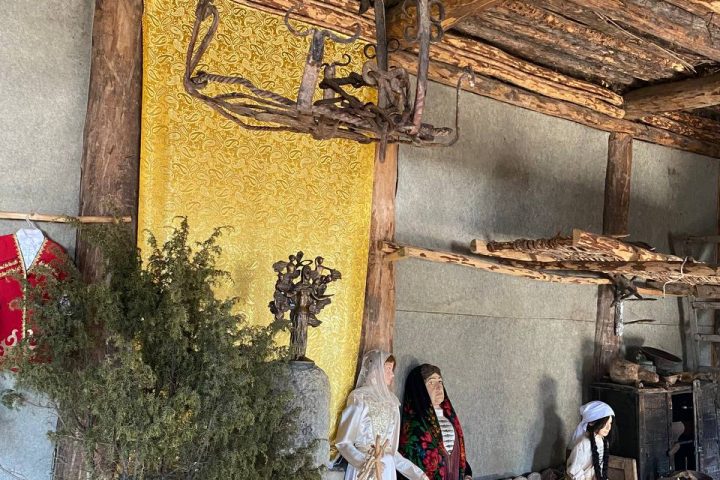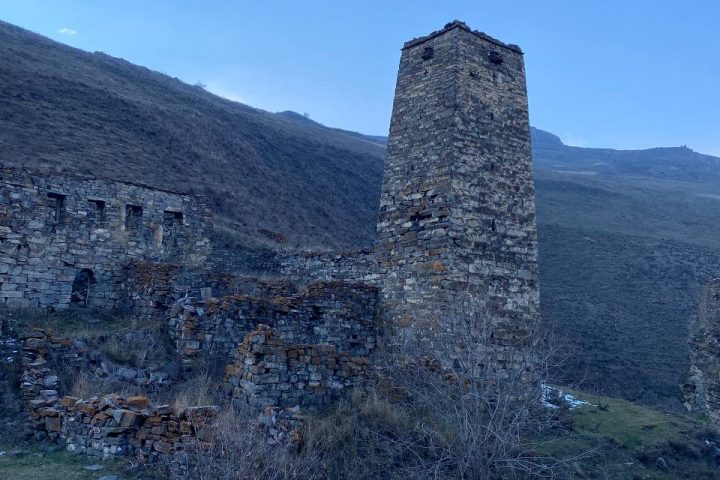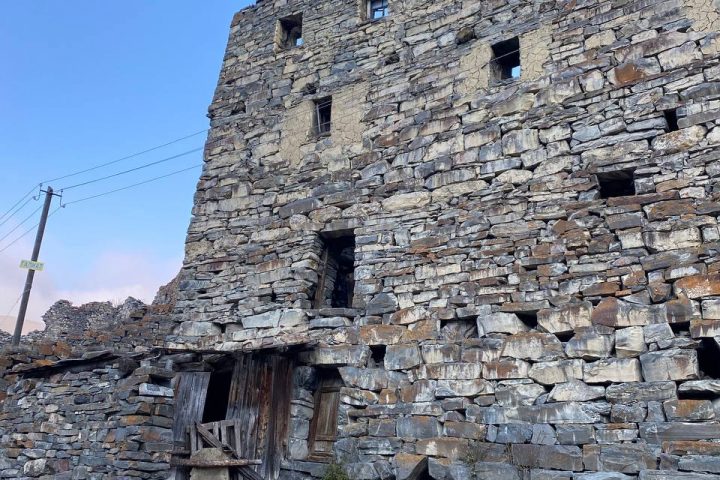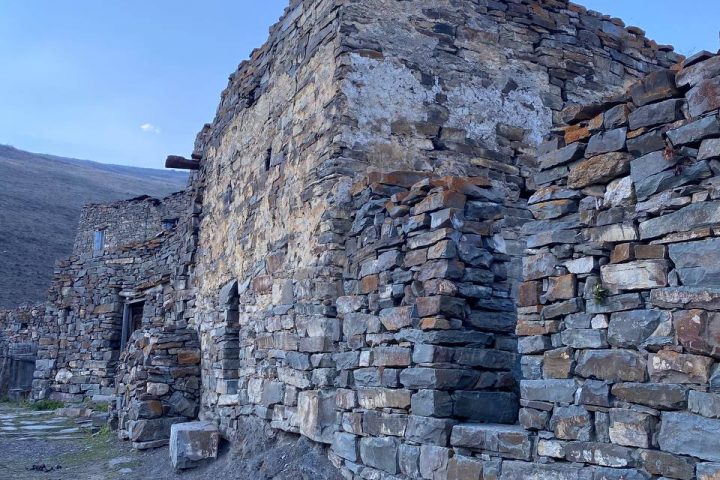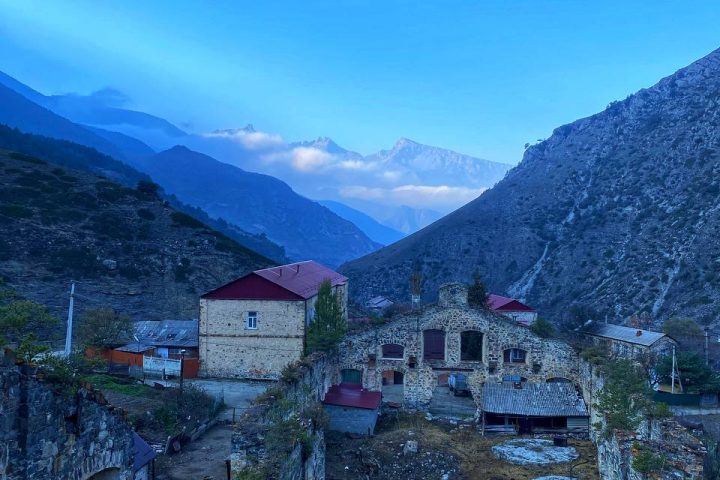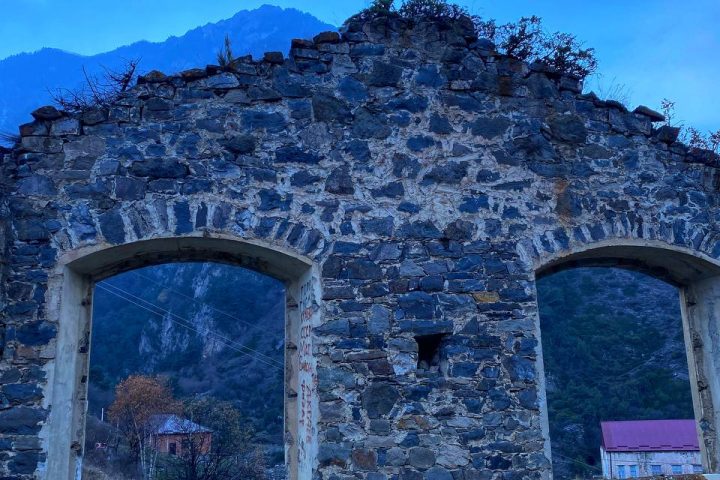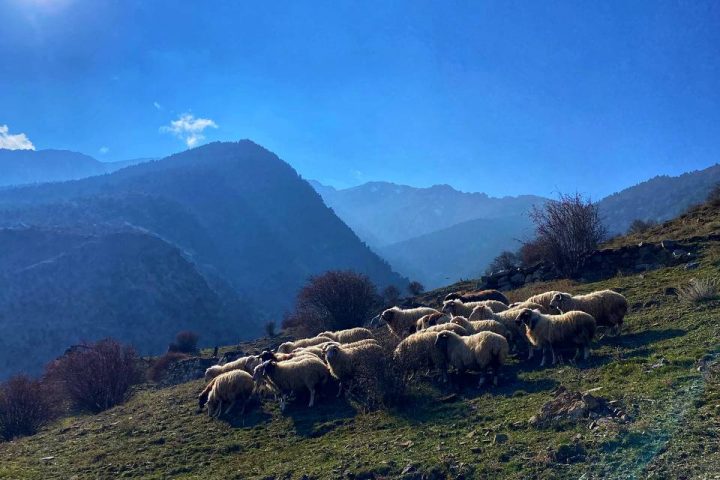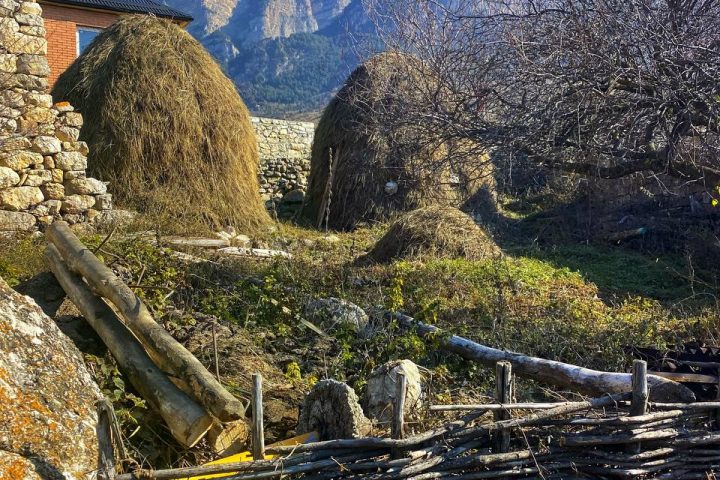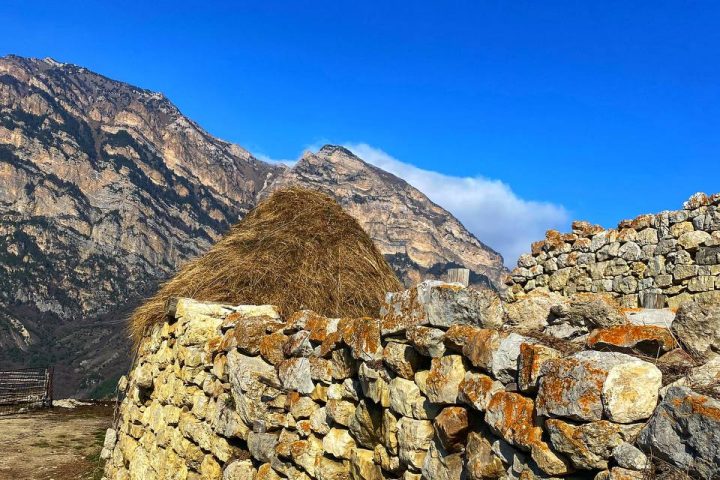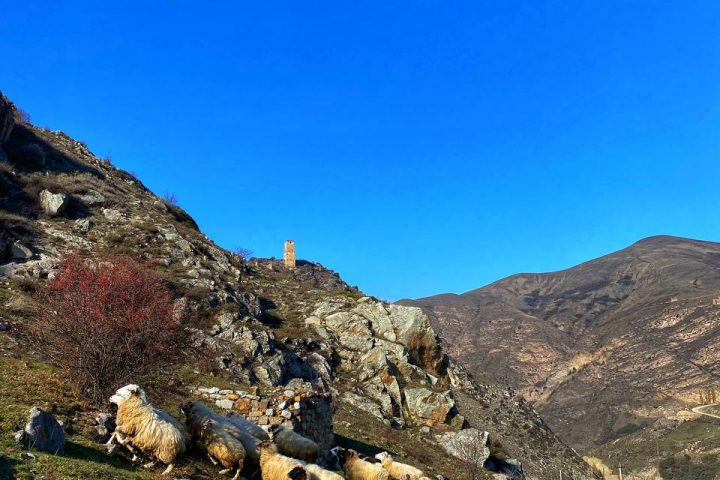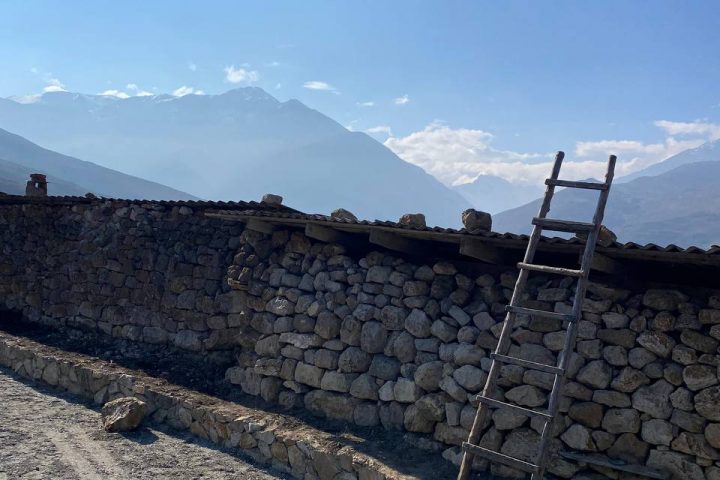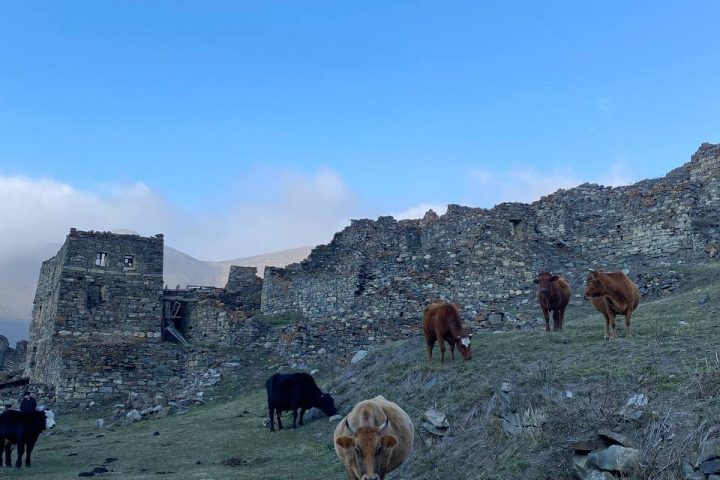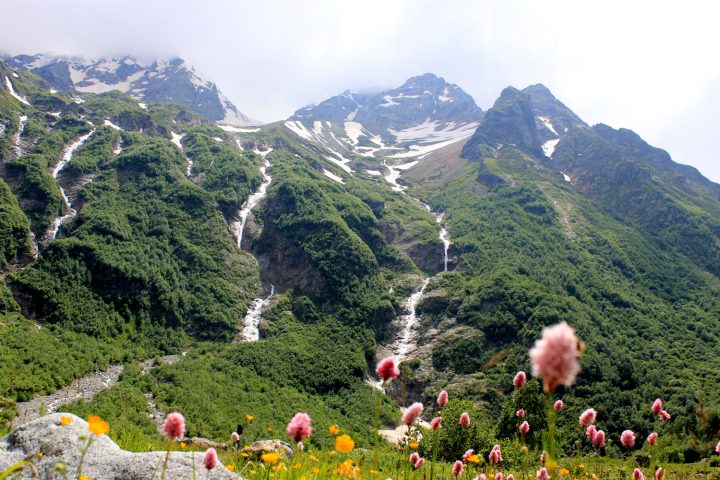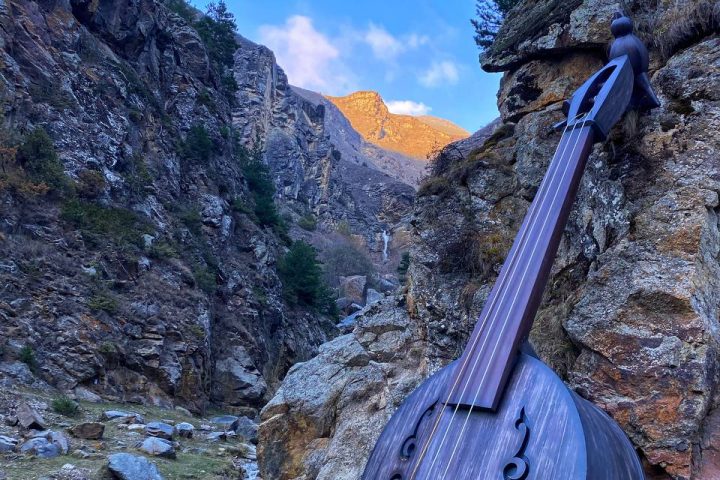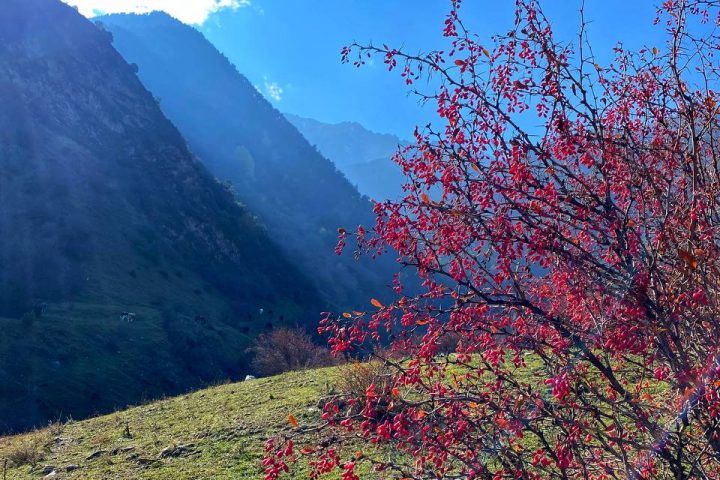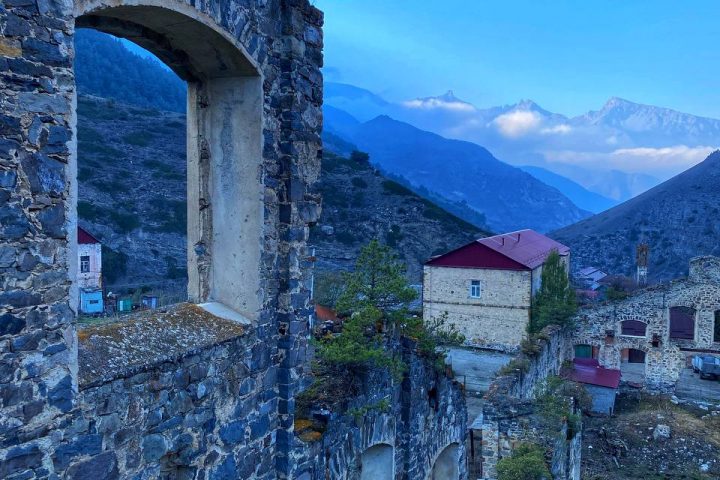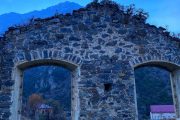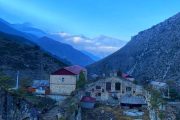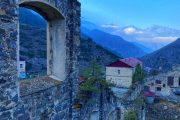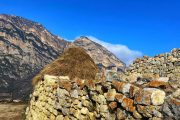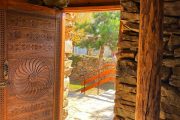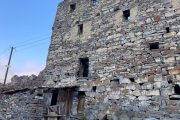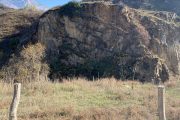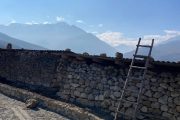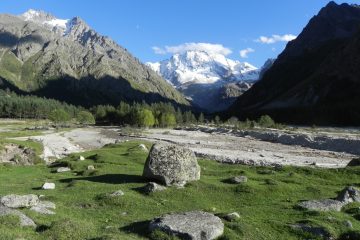Digorsky Gorge is a land of pristine nature and ancient architecture, a gathering point for climbers and one of the most beautiful places in all of North Ossetia. We will visit the Akhsinta Canyon and the Devil’s Bridge, see the ancestral towers, fortresses and sanctuaries of the Digorians.
Tour program
Akhsinta Canyon
Next, we will see Devil’s Bridge, from which in ancient times criminals sentenced to death were thrown off. If someone survived, then he received a pardon.
Akhsinta Canyon is the narrowest part of the gorge, a kind of natural gateway to Digoria. For many centuries, the passage was closed here for enemies who tried to penetrate the upper Digoria. The Iraf (Uruh) River dug a narrow canyon over 100 m deep. The Iraf cut so deeply into the layers of marl and limestone that the river is almost invisible from the road. Rocks hang over the road, forming peculiar balconies and roofs.
Akhsintta is a historical place. It is a witness to numerous clashes between residents and enemies who tried to invade the gorge.
A bridge is thrown across the Iraf River, called «Æhsintti khed» («Ahsintta’s Bridge»), better known as the «Devil’s Bridge».
From the «Devil’s Bridge» in ancient times, robbers and murderers sentenced to death were thrown off. Some remained alive. In this case, the execution was not repeated, but the criminal was released.
Nana Museum
The Nana Zadaleski Museum is a tribute to the hero of the past. It is located in the Irafsky district of North Ossetia, in the village of Zadalesk.
The name Zadaleski Nana has long been forgotten, but her feat remained in history — saving dozens of children’s lives.
Legend has it that in the 14th century, Timur’s troops captured the lands of the Alan. They burned entire settlements, intending to destroy the people. Then one brave woman gathered orphaned children in the villages and found refuge in a remote mountain village of the Digorsky Gorge. Time passed, the children grew up, and Zadaleski Nana after her death began to be revered as a saint. Since then, every year on the third Saturday of July, Zadaleski celebrates the festival of Zadaleski Nana.
The Zadaleski Nana Museum is revered as a holy place and is an object of cultural heritage of federal significance.
Ese Kanukov's Tower
This tower was the main outpost of the Donifar society. And Ese, a brave warrior and a wise elder, evoked delight among fellow countrymen and horror among enemies. Enemies, having learned that they had to fight Yese Kanukov, turned to flight even before the battle began. And today, its tower keeps the echo of distant battles — the ringing of daggers, battle orders, cries of victory. It also keeps the memory of the valiant warrior Yesa.
Fasnal Village
Next, we will walk through the village of Fasnal and see the ruins of the Belgian factory.
The village looks no different from other mountain villages, but it is famous for the fact that in the 19th century the Belgian mining and processing factory functioned here. And already in those distant times the factory had electricity and sewerage. Today the factory is badly damaged, but they say that it was once a huge building with a glass roof!
Galiat Ghost Village
Galiat is an amazing and mysterious medieval settlement. Who and why built fancy houses here, and then abandoned them. The buildings are arranged in tiers. The cunning architecture of the city is surprising — the roof of one house is a yard for another. These are original residential multi-storey buildings of the 10th century. Each such house belonged to one large family, clan.
The largest family tower of Ossetia is located here, it consisted of 4 floors. The lower floor housed livestock, people lived on two floors, and the fourth served for defense. In times of wars and raids, men took turns on duty here and controlled the territory.
The settlement is located in a lowland, surrounded by hills that protect it from all sides. The village seems to be hidden among the mountains.
An interesting attraction of Galiat are ancient drawings-writings — petroglyphs. Their main mystery lies in the fact that historians cannot decipher the information depicted on them.
Archaeologists claim that Galiat was a wealthy city. In the 10th century, water supply and sewerage were already laid here. The local rich made money by selling livestock. The Silk Road ran through Galiat, which also had a positive impact on the well-being of the city and local residents.
Return to Nalchik
After a day full of emotions we set off for Nalchik.
| PRICE | 1’100 rubles per person | ||
| DEPARTURE TIME | 09:00 from city Nalchik | ||
| RETURN TIME | 18:00-19:00 | ||
| INCLUDED IN THE PRICE |
|
||
| ADDITIONALLY PAID |
|
||
| BOOKING OF THE EXCURSION IS MADE AFTER FULL PAYMENT. IF THE EXCURSION IS CANCELED BY YOU ONE DAY BEFORE DEPARTURE AND BECAUSE OF WEATHER THE MONEY IS NOT REFUNDED. The program and time of the tour may change. Check with managers for details. |
|||


 +7 928 691 44 05
+7 928 691 44 05 
 Russia, KBR, city Nalchik
Russia, KBR, city Nalchik




